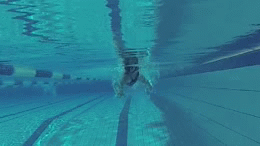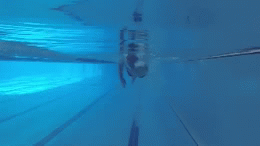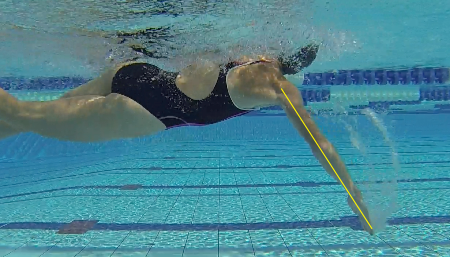Can you imagine a rower trying to move if you cut off their paddle at the end of their oar? Pulling just the shaft (pole) through the water without the paddle wouldn’t get them far. But this is what many swimmers do everyday…
At our recent freestyle clinics in Brisbane and the Gold Coast we got to see just how important this pole vs paddle concept was. We’re now using underwater filming throughout our clinics, and we constantly refer to it during each stage of the clinic to show our swimmers what they’re doing vs what they should be doing. The results within three hours have been quite dramatic, with swimmers reducing their stroke count by up to 12 strokes per 50m. Stroke count can be a great indicator of a swimmers efficiency as long as they aren’t over gliding to reduce their count.
One of the reasons swimmers are able to improve by this much is by improving the angle of their pull to make it more like a paddle, rather than a pole. The angle of the arm during the pull phase plays an important role to how much water you can ‘hold’.
We have our swimmers aim for a range of 100-130 degrees through the arm as they’re about to move past their shoulder. Most beginner to intermediate swimmers tend to be between 150-180.


One important thing to note is that the elbow should be in line or above the line of the arm when viewing from the side. This requires good flexibility through the shoulders. See the streamline test to check your shoulder flexibility.

Swimmers who are above a 2:00/100m pace for 400m will usually need to make some other changes to their stroke before focusing on the pull.
In our freestyle clinics we first focus on achieving the right body position, breathing, recovery and entry with our swimmers before developing their pull. Some of the best drills for this are front scull, top to bottom scull and single arm freestyle. They allow a swimmer to get a feel for having a wider, higher elbow position during the pull so they open up there forearm and hand to press back on the water.
Our freestyle stroke development philosophy is taught in the Effortless Freestyle program.


